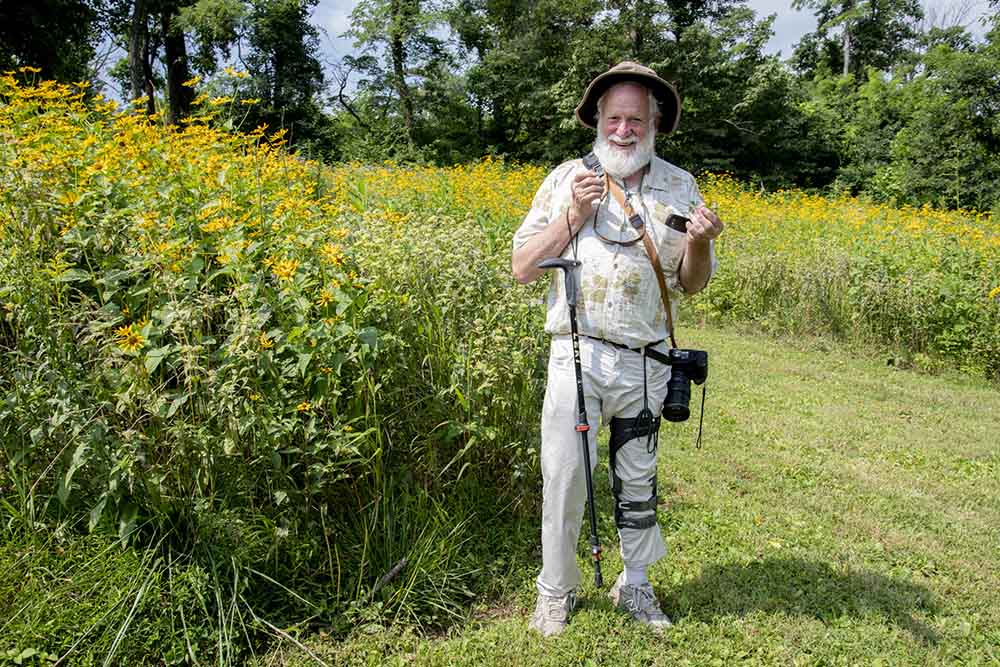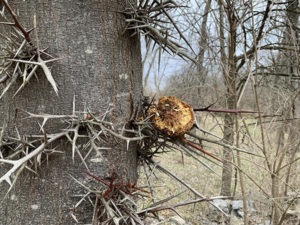
My wife and I, and our animal family, have lived on the same farm inClarke County for over 35 years. We donated an easement on our land 20 years ago for the usual reasons—we loved the farm and wanted to make sure it wouldn’t become a future subdivision. We feel that we are all part of human settlement on the landscape and everything we do should be compatible with nature’s processes.
I have walked every inch of this farm and am beginning to understand the ecology of it. I know the open fields, where wildlife like to live and the corridors they travel through.The western woods harbor fox families every spring, and the eastern woods is home to barred owls that sound off constantly. I know the big trees in the creek drainage, the giant walnut that quietly gets bigger every year, the huge busted up hackberry just down the hill, and, of course, Sampson, the white oak that fell over a few years ago whose growth rings counted 325.
Most of Clarke County west of theShenandoah River sits on a limestone ridge that runs through Virginia, western Maryland and into Pennsylvania. Osage orange trees love limestone, and over the years I’ve come to understand the cycle of osage fruit as wildlife food. In late November, hard green balls resembling the human brain cover the ground. I wonder every year about the attraction of the one eaten fruit surrounded by hundreds of untouched others. Once winter is well established and the fruit has frozen and thawed numerous times, the wildlife all eat it, and often, squirrels will carry the mover to a fence post or tree limb to eat. After the fruit is torn apart and eaten, bits of it are often scattered around, and one can easily see that they are called oranges because they are segmented like the citrus fruit we eat. We have two large matching osages in front of our house 30 feet apart. Oddly, one tree’s fruit is the size of large grapefruits while the other’s is noticeably smaller, more like baseballs.

Our farm is lucky enough to have a stream bordering one whole side, and over the years, I’ve come to understand it has cycles too—drying out in parts and slowly backfilling successive pools as groundwater rises, until the whole flow starts over again.
So what does the observation of all this ecological activity have to do with a conservation easement? One of the major benefits of an easement is the ability to plan for and “codify” the future development of one’s land. Knowing the ecology allows for planning a property’s future in a way that is compatible with nature’s processes. Our easement minimizes impervious surfaces and thoughtfully places buildings to respect these essential cycles, protecting the natural features that contribute to providing clean air and water to us, our neighbors, and the larger community. Now, with the conservation easement in place, I know that future generations will hopefully observe and benefit from these cycles and, in turn, have the chance to share the same sense of wonder I have so enjoyed over the years.
Imagine the possibilities if one had a really large parcel that might be close to a town that might need some room to grow 50 years on. One could plan an easement on the parcel to allow that growth to happen in the places that make sense, and ensure that inappropriate development doesn’t destroy the historical ecology of the rest of the land. What could be better than that?
This article was written by PEC Board co-chair George Ohrstrom II and featured in our Spring 2020 member newsletter, The Piedmont View.
